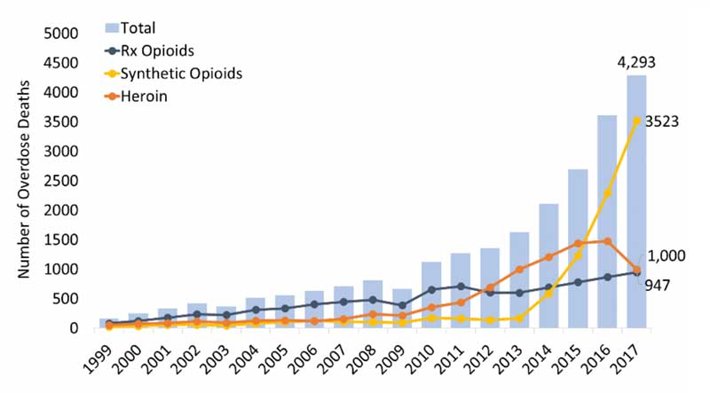Ohio’s Recent Groundbreaking Settlement with Big Pharma

In the last year, several pharmaceutical lawsuits have come to the forefront of our attention. We can thank the media for that. But in this case, it’s a good thing that these lawsuits have been reported on so extensively. We’re speaking of course of the state and federal lawsuits against pharma companies for the hand that such organizations played in the creation of the opiate epidemic.
The most recent story comes from Ohio, the Birthplace of Aviation (and also, in some ways, the birthplace of the now nationwide opiate epidemic). Just in the last few weeks, drug manufacturers and distributors came to a settlement with Ohio counties in a historic agreement.
This settlement and others like it are historic because they are some of the first incidences in history when major pharmaceutical companies have been held legally accountable (and to the tune of hundreds of millions of dollars, no less) for the addictive drugs that they made and distributed.
What are the details of the lawsuit? And what happened in Ohio that brought on such a groundbreaking settlement?
A Look at the Lawsuits
In late October of this year, USA Today published a detailed piece on the Ohio settlements. Quoting their article, “McKesson Corp., Cardinal Health Inc., AmerisourceBergen Corp., and Israel-based drugmaker Teva Pharmaceutical Industries Ltd. will pay a total of $215 million under terms of the deal. Teva would contribute $20 million in cash and $25 million worth of Suboxone, used to treat opioid addiction.”
“The Ohio case had been set to be the first federal trial related to an opioid epidemic that has claimed an estimated 400,000 American lives over two decades…”
And that’s just the beginning. Again quoting USA Today, “The Ohio case had been set to be the first federal trial related to an opioid epidemic that has claimed an estimated 400,000 American lives over two decades. Cuyahoga and Summit counties sued Teva, the distributors, and Walgreens, claiming their practices contributed to the epidemic.”
The Ohio case is only the first of many upcoming cases. According to the article, more than 2,700 cases have been filed against pharmaceutical companies, most of which are being lumped into one massive and unprecedented federal case. There is talk of the amassed sum of potential settlement dollars reaching into the tens of billions of dollars.
And that still might not be enough to effectively address addiction in America.
Opiate Addiction in Ohio
When people think of Ohio, they probably would not guess that Ohio has one of the highest drug overdose deaths per capita of any state in the U.S. In fact, only West Virginia loses more people per capita to drug overdoses than Ohio.

Quoting the National Institute on Drug Abuse’s most recent data on Ohio’s opiate crisis, “In 2017, Ohio had the second-highest rate of drug overdose deaths involving opioids in the U.S. There were 4,293 reported deaths—a rate of 39.2 deaths per 100,000 persons, compared to the average national rate of 14.6 deaths per 100,000 persons.”
Deaths from every type of opiate have been on the rise in Ohio. According to the NIDA data, 710 people died from prescription opiate overdoses in Ohio in 2011. In 2017, 947 people died from prescription opiates.
And that’s just the beginning. The fentanyl crisis has also struck Ohio. According to NIDA data, synthetic opiate deaths rose by almost twenty-five times from 139 deaths in 2012 to 3,523 deaths in 2017.
During that same time period, heroin deaths were also going up. By 2016, heroin overdoses in Ohio reached a new all-time high. Almost 1,500 people died from heroin overdoses that year.
The common denominator of all of these opiate problems is that they all were born from the insidious increase of painkiller prescribing in Ohio.
- Opiate corporations came in first. They manufactured and distributed addictive painkillers throughout Ohio.
- Doctors began prescribing such painkillers to Ohio patients en masse.
- Patients became addicted, and hundreds of thousands, if not millions of pills, were also diverted onto the streets.
- In the years following, illicit synthetic opiate misuse and heroin misuse also soared, as painkiller addicts sought cheaper and more potent highs.
Again quoting NIDA, “In 2017, Ohio providers wrote 63.5 opioid prescriptions for every 100 persons compared to the average U.S. rate of 58.7 prescriptions. This represents a 38 percent decrease from a peak of 102.4 opioid prescriptions per 100 persons in 2010. The rate of overdose deaths involving opioid prescriptions rose steadily from 0.7 deaths per 100,000 persons in 1999 to a peak of 8.4 deaths per 100,000 persons in 2017.”
What Can We Do?
It’s good to see pharma companies being held accountable for creating the very “medicines” that fed the nascent opiate crisis. However, holding pharma companies accountable is not going to relieve our country from the grips of the drug epidemic.
Dollars won in court settlements should help direct funding into states that need drug rehab programs and drug prevention programs. But we must caution ourselves not to rely on federal, state, or even county governments to address the problem for us.
What can the American people do to curb the epidemic?

We can all work together to prevent the spread of addiction. It’s something we can work on in our communities. We need to get our schools to teach students about the harmful effects of drugs. We need to ensure that parents are having conversations with their kids about drugs. The thing is, when young people know the truth about drugs, they are far less likely to experiment with such substances. We can hold public marches to raise awareness, support local law enforcement to crack down on drug trafficking, institute neighborhood watches, hold fundraising events to support local treatment centers, etc.
Another beneficial prevention technique occurs right in the doctor’s office, between prescribing doctor and patient. A way to halt the spread of the opiate epidemic is for patients to inform themselves on prescription opiates. Too often patients end up receiving prescriptions that they don’t really need, and that often has harmful long-term consequences. Patients need to do their own research on medicines they are being encouraged to take. Patients also need to inform themselves alternative treatments that might not carry the same risks and addictive potential as painkillers.
It all starts with talking about the issue. We need to recognize that our country is mired in a drug addiction epidemic. It’s a national public health emergency, but that doesn’t mean that cities can’t take measures to prevent the spread of substance abuse. No community is safe from the crisis.
A big part of addressing the drug problem on a local level means helping those who are actively addicted to drugs. Waiting for pharma lawsuit dollars to take effect could take years. This means that if we know someone who is struggling with an addiction, we have to do everything we can to get them help. If we know someone who is actively using drugs and alcohol, there’s no waiting around for settlements to come to fruition. We have to get people who are using drugs and alcohol into treatment as soon as possible.
No lawsuit, no matter how groundbreaking, is going to repair the damage that addiction has done to our country. That is something we all have to work on, something we all have to heal from. It will take hard work from all of us, but a sober, drug-free society is more than worth it.
Sources:
- https://www.usatoday.com/story/news/nation/2019/10/21/opioid-trial-settlement-report/4051076002/
- https://www.drugabuse.gov/opioid-summaries-by-state/ohio-opioid-summary
Reviewed and Edited by Claire Pinelli, ICAADC, CCS, LADC, RAS, MCAP


